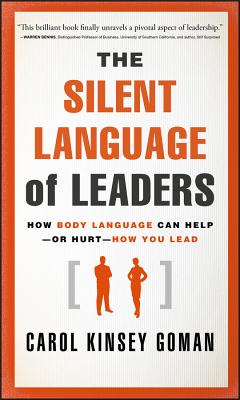In The Silent Language of Leadership, Carol Kinsey Goman explains that personal space, physical gestures, posture, facial expressions, and eye contact communicate louder than words and, thus, can be used strategically to help leaders manage, motivate, lead global teams, and communicate clearly in the digital age. Drawing on compelling psychological and neuroscience research, she shows leaders how to adjust their body language for maximum effect and offers advice for global business leaders. Some of the advice includes:
- Avoid shallow breathing while giving a pep talk to employees. Research shows that a shallow breather can make an entire room feel anxious and thus lead listeners to not believe the speaker.
- When meeting with employees in your organization with whom you don?t interact often, give them an eyebrow flash?the rapid raising of the inside corners of the eyebrow. This signal is used mostly involuntarily, for example, when you run into someone you know on the street. But it is also a powerful way to subtly show recognition and interest in someone.
- At the next business dinner or face-to-face meeting, find a table that allows you to sit at right angles to each other. Research shows that people are more interactive when seated at right angles that when straight across from each other.
- Next time you?re leading a meeting, notice if any audience members cover or block their mouths, which usually indicates skepticism. If you see this gesture, stop talking and address their disbelief: ?I know some of you have doubts about what I?ve just said,? or ?You look skeptical. Can you tell me what your concerns are??
Profound changes are shaking up our lives and the kind of leaders the world seeks: sharp economic swings, increasing global competitiveness, new technologies, social and cultural shifts, and the reshaping of our organizations. As the pace of change continues to accelerate, leaders need every tool available?including nonverbal skills?to improve their credibility and stay ahead of the curve.











